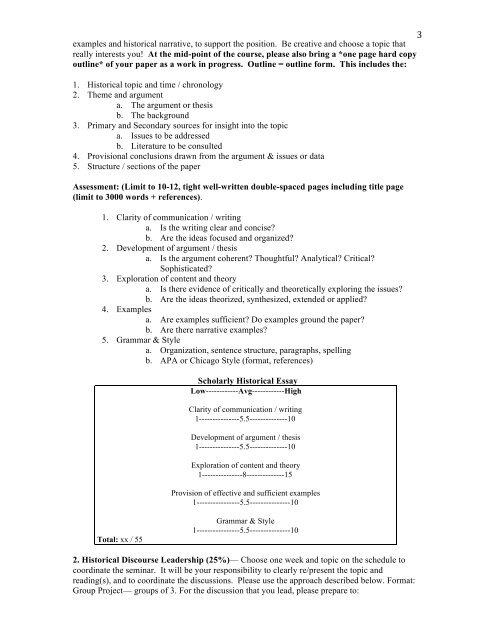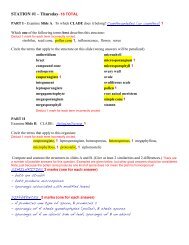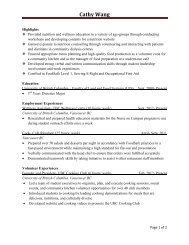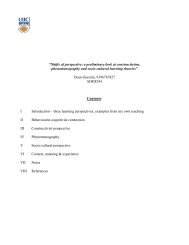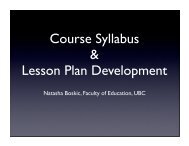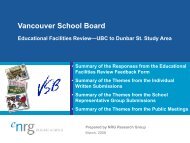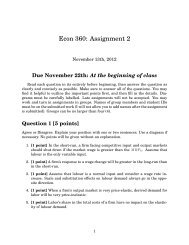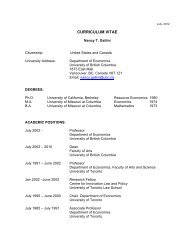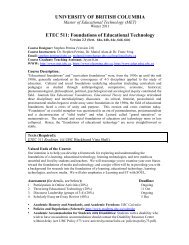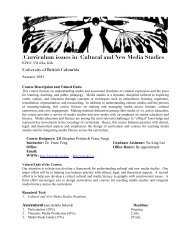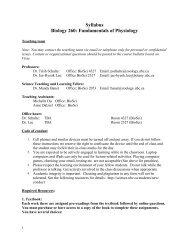History of Media and Technology in Education - UBC Blogs ...
History of Media and Technology in Education - UBC Blogs ...
History of Media and Technology in Education - UBC Blogs ...
Create successful ePaper yourself
Turn your PDF publications into a flip-book with our unique Google optimized e-Paper software.
3 <br />
examples <strong>and</strong> historical narrative, to support the position. Be creative <strong>and</strong> choose a topic that<br />
really <strong>in</strong>terests you! At the mid-po<strong>in</strong>t <strong>of</strong> the course, please also br<strong>in</strong>g a *one page hard copy<br />
outl<strong>in</strong>e* <strong>of</strong> your paper as a work <strong>in</strong> progress. Outl<strong>in</strong>e = outl<strong>in</strong>e form. This <strong>in</strong>cludes the:<br />
1. Historical topic <strong>and</strong> time / chronology<br />
2. Theme <strong>and</strong> argument<br />
a. The argument or thesis<br />
b. The background<br />
3. Primary <strong>and</strong> Secondary sources for <strong>in</strong>sight <strong>in</strong>to the topic<br />
a. Issues to be addressed<br />
b. Literature to be consulted<br />
4. Provisional conclusions drawn from the argument & issues or data<br />
5. Structure / sections <strong>of</strong> the paper<br />
Assessment: (Limit to 10-12, tight well-written double-spaced pages <strong>in</strong>clud<strong>in</strong>g title page<br />
(limit to 3000 words + references).<br />
1. Clarity <strong>of</strong> communication / writ<strong>in</strong>g<br />
a. Is the writ<strong>in</strong>g clear <strong>and</strong> concise<br />
b. Are the ideas focused <strong>and</strong> organized<br />
2. Development <strong>of</strong> argument / thesis<br />
a. Is the argument coherent Thoughtful Analytical Critical<br />
Sophisticated<br />
3. Exploration <strong>of</strong> content <strong>and</strong> theory<br />
a. Is there evidence <strong>of</strong> critically <strong>and</strong> theoretically explor<strong>in</strong>g the issues<br />
b. Are the ideas theorized, synthesized, extended or applied<br />
4. Examples<br />
a. Are examples sufficient Do examples ground the paper<br />
b. Are there narrative examples<br />
5. Grammar & Style<br />
a. Organization, sentence structure, paragraphs, spell<strong>in</strong>g<br />
b. APA or Chicago Style (format, references)<br />
Scholarly Historical Essay<br />
Low------------Avg------------High<br />
Clarity <strong>of</strong> communication / writ<strong>in</strong>g<br />
1---------------5.5--------------10<br />
Development <strong>of</strong> argument / thesis<br />
1---------------5.5--------------10<br />
Exploration <strong>of</strong> content <strong>and</strong> theory<br />
1---------------8--------------15<br />
Provision <strong>of</strong> effective <strong>and</strong> sufficient examples<br />
1----------------5.5---------------10<br />
Total: xx / 55<br />
Grammar & Style<br />
1----------------5.5---------------10<br />
2. Historical Discourse Leadership (25%)— Choose one week <strong>and</strong> topic on the schedule to<br />
coord<strong>in</strong>ate the sem<strong>in</strong>ar. It will be your responsibility to clearly re/present the topic <strong>and</strong><br />
read<strong>in</strong>g(s), <strong>and</strong> to coord<strong>in</strong>ate the discussions. Please use the approach described below. Format:<br />
Group Project— groups <strong>of</strong> 3. For the discussion that you lead, please prepare to:


